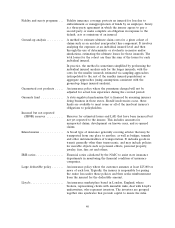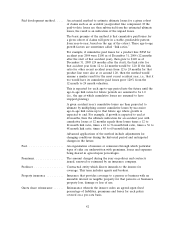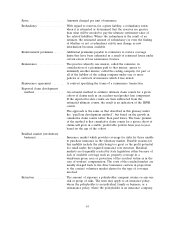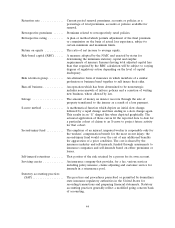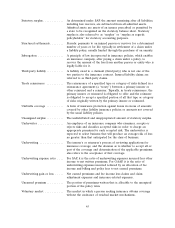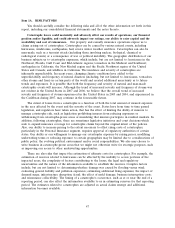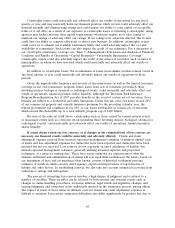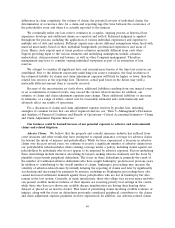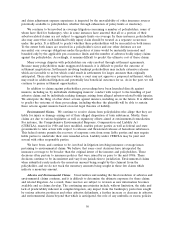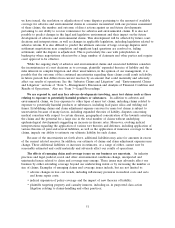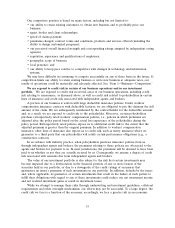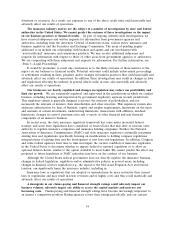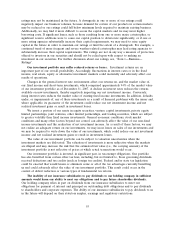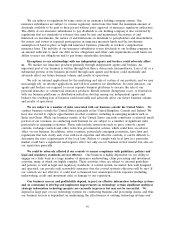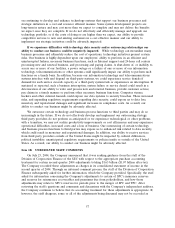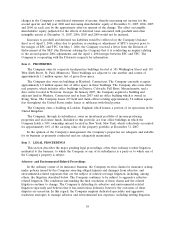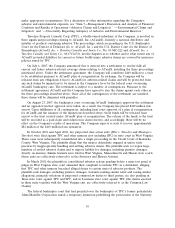Travelers 2007 Annual Report Download - page 61
Download and view the complete annual report
Please find page 61 of the 2007 Travelers annual report below. You can navigate through the pages in the report by either clicking on the pages listed below, or by using the keyword search tool below to find specific information within the annual report.differences in claim complexity, the volume of claims, the potential severity of individual claims, the
determination of occurrence date for a claim and reporting lags (the time between the occurrence of
the policyholder event and when it is actually reported to the insurer).
We continually refine our loss reserve estimates in a regular, ongoing process as historical loss
experience develops and additional claims are reported and settled. Informed judgment is applied
throughout the process, including the application of various individual experiences and expertise to
multiple sets of data and analyses. Different experts may choose different assumptions when faced with
material uncertainty, based on their individual backgrounds, professional experiences and areas of
focus. Hence, such experts may at times produce estimates materially different from each other.
Experts providing input to the various estimates and underlying assumptions include actuaries,
underwriters, claim personnel and lawyers, as well as other Company management. Therefore,
management may have to consider varying individual viewpoints as part of its estimation of loss
reserves.
We attempt to consider all significant facts and circumstances known at the time loss reserves are
established. Due to the inherent uncertainty underlying loss reserve estimates, the final resolution of
the estimated liability for claims and claim adjustment expenses will likely be higher or lower than the
related loss reserves at the reporting date. Therefore, actual paid losses in the future may yield a
materially different amount than is currently reserved.
Because of the uncertainties set forth above, additional liabilities resulting from one insured event,
or an accumulation of insured events, may exceed the current related reserves. In addition, our
estimate of claims and claim adjustment expenses may change. These additional liabilities or increases
in estimates, or a range of either, cannot now be reasonably estimated and could materially and
adversely affect our results of operations.
For a discussion of claims and claim adjustment expense reserves by product line, including
examples of common factors that can affect required reserves, see ‘‘Item 7—Management’s Discussion
and Analysis of Financial Condition and Results of Operations—Critical Accounting Estimates—Claims
and Claim Adjustment Expense Reserves.’’
Our business could be harmed because of our potential exposure to asbestos and environmental
claims and related litigation.
Asbestos Claims. We believe that the property and casualty insurance industry has suffered from
court decisions and other trends that have attempted to expand insurance coverage for asbestos claims
far beyond the intent of insurers and policyholders. While we have experienced a decrease in asbestos
claims over the past several years, we continue to receive a significant number of asbestos claims from
our policyholders (which includes others seeking coverage under a policy), including claims against our
policyholders by individuals who do not appear to be impaired by asbestos exposure. Factors underlying
these claim filings include intensive advertising by lawyers seeking asbestos claimants and the focus by
plaintiffs on previously peripheral defendants. The focus on these defendants is primarily the result of
the number of traditional asbestos defendants who have sought bankruptcy protection in previous years.
In addition to contributing to the overall number of claims, bankruptcy proceedings may increase the
volatility of asbestos-related losses by initially delaying the reporting of claims and later by significantly
accelerating and increasing loss payments by insurers, including us. Bankruptcy proceedings have also
caused increased settlement demands against those policyholders who are not in bankruptcy but who
remain in the tort system. Currently, in many jurisdictions, those who allege very serious injury and who
can present credible medical evidence of their injuries are receiving priority trial settings in the courts,
while those who have not shown any credible disease manifestation are having their hearing dates
delayed or placed on an inactive docket. This trend of prioritizing claims involving credible evidence of
injuries, along with the focus on defendants previously considered peripheral, contributes to the claims
and claim adjustment expense payments we have experienced. In addition, our asbestos-related claims
49



